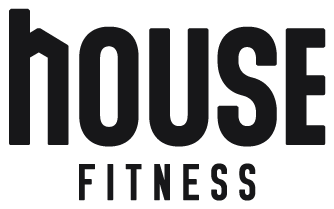How to Design a Training Program Like an Athlete
MAY 10, 2021
How to Design a Training Program Like an Athlete
Even if you’re not an athlete, you should still train like one.
By House Fitness
Everybody is an athlete (or has the potential to be one). As long as you are working toward a fitness goal, you are an athlete. But — are you training like one?
What Does Being an Athlete Encompass?
An athlete is someone who exercises with intention.
When we capture the intentionality of the training that athletes take on, we can improve all aspects of our fitness (from our mobility and flexibility to our endurance, strength, mental toughness, and beyond.) We can get more specific results and stand out amongst the crowd.
What Can We Learn From How Athletes Train?
We’re all busy. We have families, work, and responsibilities. We may not have hours every single day to spare in order to train like an athlete, but we can still take a page from their book and design a training program based on their approach.
“If you have a body, you are an athlete.”
— Bill Bowerman (Nike Founder)
When an athlete trains, there is intention behind everything they’re doing. The #1 mistake I see people make when they first begin to train is that they don’t know why they’re training.
The key difference between how your Average Joe exercises and how an athlete trains is intentionality. More intention = more payoff.
You don’t need to work at maximum intensity — just maximum intentionality.
Key Components to Training Like an Athlete
There are some key components you need to put in place as an athlete regardless of what training goals you’re trying to achieve or what sport you’re trying to master.
In designing an effective training program that works for you, you first need to establish a baseline level of strength. Establishing this baseline is fundamental to measuring the progress we are making over the course of our fitness journey.
Next, identify your target. What are your goals? What are you working toward achieving? You need to know where you’re going and so you can create an effective plan on how to get there. Even if your goal is simply to get more fit, lean, build more muscle, and have better output — that’s a great place to start in creating the foundation for your plan.
Keep these core pieces in mind: 1. Endurance 2. Flexibility 3. Strength 4. Mental Toughness. They all play a piece in creating a well-rounded training program.
Feedback is #1. Having an outside, objective opinion is critical in maximizing your effectiveness and reducing your risk of injury. This is where a coach comes in. They can offer you constructive feedback and create a personalized plan that addresses your needs.
Variety keeps things interesting. If you do the same workout and routine every day, you will get bored — but even worse: your progress will stagnate. A different lens to train from with different objectives keeps things fresh. Try splitting your workout into different intentions throughout the week. For example, if you’re going to work out five days of the week, you should have five different focuses.
Day 1: Muscle strengthening and compound exercises.
Day 2: General athleticism; A combination of cardiovascular and muscular endurance.
Day 3: Agility and speed work.
Day 4: Mobility and/or flexibility. Expose your body to different ranges of motion and control.
Day 5: Cardiovascular and/or breath control. Focus on developing your lung capacity and certain types of breathing so you can improve cardiovascular output.
But, as important as variety is, repetition holds the same weight. You need repetition in order to improve and perfect your form. In the case of developing a new skill, focus on repetition of your movement and breathwork.
Redesign, Retest, Reanalyze + Repeat. You always have to be adapting your program based on your ever-changing progress and goals. Generally, a three-month basis for retesting is a good place to start as it gives you enough time to see true improvement in cardiovascular, fitness, endurance, and strength.
“To uncover your true potential you must first find your own limits and then you have to have the courage to blow past them.”
— Picabo Street
Additionally, you need an equal amount of recovery days to your high-intensity days. There can be the desire to want to go all-in and push ourselves to our max — but even athletes don’t do that. They have a structure in place that allows for training days of high-intensity, recovery, and focused training.
Remember — the only thing separating you from being an athlete is your intent.
If you're ready to take your training to the next level, our coaches are ready to help!





